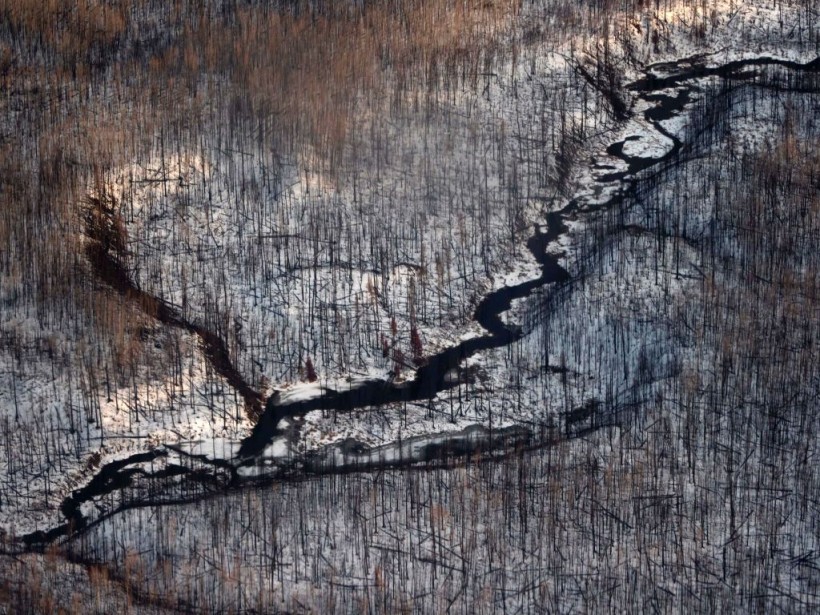(Photo : Photo credit should read ROBYN BECK/AFP via Getty Images)
Forest fires have been a major concern in boreal forests in the far northern latitudes, suffering tree loss in the last ten years than any other place on Earth.
Data shows that Russian forests are most affected, losing more trees to fire than any other country, The Guardian reported. Scientists warn that huge quantities of buried carbon dioxide may escape in the wide boreal region that encircles the northern hemisphere taking in parts of Scandinavia, Estonia, Lithuania, Russia, Alaska and Canada, among other countries, on top of the lost trees that take up to a century to grow back.
According to research published on Wednesday by Global Forest Watch, an initiative of the World Resources Institute, northern boreal forests cover about 70% of all tree loss owing to fire in the past two decades. About 80m hectares was lost over the period 2001 to 2021, of which Russia losing about 53m hectares of tree cover to fire since 2001, and Canada losing about 27m hectares to fire on the same period.
'Wake-up Call' to the World
Analyst at the World Resources Institute and co-author of the report, James MacCarthy, found the findings "very concerning" and a "wake-up call to the world".
"Forests are our best line of defense against climate change, and should be at the top of our list [of priorities]," he said, adding that carbon released to the atmosphere by forest fires was creating a vicious circle of climate damage. "These forests can go from being carbon sinks to being sources of carbon in the atmosphere."
Forest fires are more common in temperate regions like Europe and the US, but rapid warming in boreal forests makes it more prone to catch fire. While a third to 40% of boreal forest fires start naturally by lightning strikes, the other leading source of fires starts with the people. Now, the amount of forest lost to fire due to droughts and wildfire has been increasing, The Guardian wrote.
Also read: Winter in Western Himalayas Fluctuate by 50% Across Atlantic Ocean Between the Azores and Iceland
Tree Cover Loss Around the World
Fires account for about a quarter of tree cover loss around the world, increasing by about 4% a year, or about 230,000 additional hectares each year. According to data, about half of which is caused by bigger fires in boreal regions.
Even the tropics owe its tree loss to fire by about 5% a year or 36,000 additional hectares.
Tree loss due to forest fires has increased globally each year by about 3m hectares since 2001, amounting to an additional area the size of Belgium lost to fire each year, compared with a decade ago. Last year, forest fires burned an area of trees roughly the size of Thailand and was considered the worst on record.
This year, hard-hit regions of record-breaking temperatures include Europe, parts of the US, south Asia, parts of China and other places worldwide.
On the brighter side, our knowledge of tree cover loss has improved remarkably in the last decade with the use of satellite imagery for a much more detailed view of our forests.
Related article: Drought Resistant Garden Lets Gardeners Continue Amidst Climate Change
© 2024 NatureWorldNews.com All rights reserved. Do not reproduce without permission.


![Climate Change is Reducing Dust Levels Worldwide as Arctic Temperature Warms [Study]](https://1471793142.rsc.cdn77.org/data/thumbs/full/70320/280/157/50/40/climate-change-is-reducing-dust-levels-worldwide-as-arctic-temperature-warms-study.jpg)
![Tsunami Hazard Zones: New US Map Shows Places at Risk of Flooding and Tsunamis Amid Rising Sea Levels [NOAA]](https://1471793142.rsc.cdn77.org/data/thumbs/full/70325/280/157/50/40/tsunami-hazard-zones-new-us-map-shows-places-at-risk-of-flooding-and-tsunamis-amid-rising-sea-levels-noaa.jpg)


